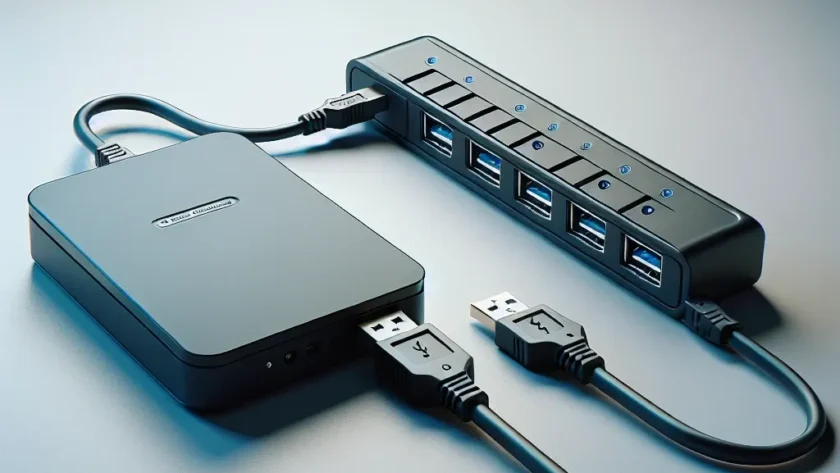Introduction
The use of external hard drives has become increasingly popular among tech users for data storage and backup solutions. As technology evolves, so does the number of devices we use simultaneously. This growing reliance on multiple devices leads to the question: Can I connect an external hard drive to a USB hub? In this article, we will explore the answer, discuss the types of USB hubs available, their compatibility with external hard drives, and provide tips for ensuring optimal performance.
Understanding USB Hubs
Before diving into the details, it is essential first to understand what a USB hub is and how it functions. A USB hub expands the number of available USB ports on your computer or laptop, allowing you to connect multiple devices such as keyboards, mice, printers, and of course, external hard drives. Below is a table summarizing the main aspects of USB hubs:
| Feature | Description |
|---|---|
| Type | Powered vs. Unpowered |
| Power Supply | External power source for powered hubs; bus-powered for unpowered hubs |
| Connection Speed | USB 2.0, USB 3.0, USB 3.1 |
| Compatibility | Windows, MacOS, Linux |
Types of USB Hubs
Here are the major types of USB hubs:
- Unpowered Hubs: These hubs do not have an external power source and rely entirely on the power supplied by the computer’s USB port. They are suitable for low-power devices such as mice and keyboards but may struggle to power higher-demand devices like external hard drives.
- Powered Hubs: These hubs come with an external power adapter, allowing them to deliver adequate power to multiple devices. They are suitable for connecting external hard drives, as they offer the necessary power for smooth operation.
Compatibility with External Hard Drives
USB Standards
External hard drives typically operate using various USB standards, including:
- USB 2.0: Offers a maximum transfer speed of 480 Mbps.
- USB 3.0: Provides significantly faster data transfer rates, up to 5 Gbps.
- USB 3.1: Double the speed of USB 3.0, allowing for rates up to 10 Gbps.
When connecting an external hard drive to a USB hub, ensure that both the hub and the hard drive support compatible USB standards for optimal performance.
Power Requirements
External hard drives require more power than standard USB devices. This is where the choice between powered and unpowered hubs becomes critical. Always check the power specifications of your external hard drive and the USB hub:
- If your external hard drive specifies 5V and requires 900mA of power, a powered hub is mandatory for smooth operation.
- If you connect an external hard drive to an unpowered hub, you risk insufficient power supply, leading to disconnection or data corruption.
Optimal Usage Scenarios
When to Use a USB Hub with an External Hard Drive
There are various scenarios when you might consider connecting an external hard drive to a USB hub:
- Multiple Device Connections: If you require connections for other devices like printers, additional storage, or peripherals, a powered hub allows you to connect everything seamlessly.
- Port Accessibility: Using a USB hub can make it easier to access ports, especially on laptops with limited USB connections.
- Data Transfer Efficiency: Powered hubs maintaining a consistent power supply can facilitate faster and more reliable data transfers between the external hard drive and the computer.
Common Issues
Despite the advantages, users may encounter certain issues when connecting external hard drives via USB hubs:
- Insufficient Power: If using an unpowered hub, the external hard drive may not power on or function correctly.
- Device Recognition: External hard drives may not be recognized by the operating system if the USB hub is overloaded with devices.
- Slow Transfer Speeds: Depending on the hub’s version, transfer speeds may be limited, affecting overall performance.
Tips for Successful Connection
To ensure a successful connection between an external hard drive and a USB hub, consider the following tips:
- Choose a Powered Hub: For external hard drives, always opt for a powered USB hub to guarantee sufficient power.
- Check Compatibility: Verify both the USB hub and the hard drive support the same USB version for optimal speed.
- Avoid Overloading: Limit the number of connected devices when using a powered hub to avoid performance issues.
- Regular Maintenance: Keep data transferred to the external hard drive organized to prevent performance slowdown.
Conclusion
In conclusion, connecting an external hard drive to a USB hub is not only possible but can also enhance your computing experience if done correctly. Understanding the characteristics of the USB hub, its power requirements, and following best practices will lead to successful device connections. Remember always to utilize a powered hub to ensure your external hard drive runs smoothly and efficiently. Following the advice outlined in this article will help you navigate the complexities of using USB hubs effectively.

